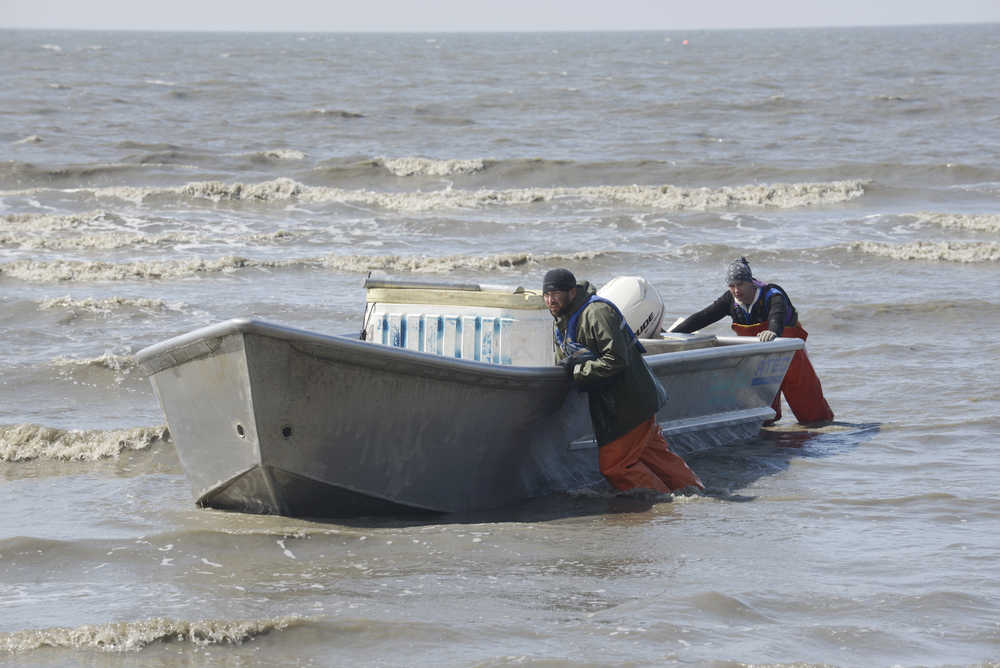As sockeye salmon continue to slam into the Kasilof River, a portion of the commercial set gillnet fishery will get a chance to intercept salmon in the second largest escapement measured on the river.
The opening is two days earlier than the first regularly scheduled season opening for the Kasilof portion of the set gillnet fishery — however provisions in its management plan allow Alaska Department of Fish and Game managers to open on or after June 20 if more than 50,000 sockeye have entered the Kasilof River.
That goal was met and as of 8 a.m. Sunday. Nearly 82,000 sockeye salmon are estimated to have passed the Kasilof River sonar site, according to Fish and Game data.
Despite having the regulatory authority to fish the setnetters and slow the flow of sockeye into the Kasilof — a river that exceeded its escapement goal by nearly 100,000 fish in 2013 — area management biologist Pat Shields said Fish and Game waited a few days to try and protect early-run king salmon bound for the nearby Kenai River.
The early run of king salmon on the Kenai River was forecasted by Fish and Game to come in an about 2,230 fish — well below the lower end of the river’s escapement goal range of 5,300 – 9,000 fish. Management biologists announced a closure to sportfishing for early run Kenai king salmon in late February — eliminating the already-struggling six-week fishery.
Kenai-bound king salmon can be found mixed in with Kasilof-bound sockeye salmon and some will likely be caught during the Kasilof setnet opening.
However, Fish and Game predictions on the strength of the early run of Kenai king salmon have been exceeded — by Thursday nearly 4,000 king salmon had passed the river’s sonar.
The 7 a.m. to 4 p.m. period should allow setnetters to fish nearly the entirety of Monday’s flood tide. The Kasilof portion of the East Side Setnet fishery spans the beach along the east side of Cook Inlet from Ninilchik to a point about halfway between the Kenai and Kasilof Rivers known as the Blanchard Line.
Recent changes passed during the February meeting of the Alaska Board of Fisheries will restrict the amount of gear certain setnet operations can use. Setnetters who own and operate two set gillnet permits may operate up to 210 fathoms of year. However, half of that many not be deeper than 29 meshes; a 16 mesh — or about 8-foot — reduction in available mesh depth.
Each set gillnet operated at the new shorter depth must be identified with a blue buoy that is 9.5 inches in diameter or greater, according to a Fish and Game emergency order.
The commercial drift netting fleet will also be opened for a regular 12-hour period Monday, beginning at 7 a.m. Drift fishers will be allowed to fish in the Kasilof Section — an area which was previously closed to driftnetting within 2-miles of shore.
However, driftnetting within one mile of the mean low water mark is closed from the Ninilchik boat harbor entrance to the Anchor Point Light.
While the Kasilof section setnet fishery will likely fish its next regularly scheduled period on Thursday — Shields said it would be a “day-to-day” decision determining if they would be allowed in the water again before that date.
Reach Rashah McChesney at rashah.mcchesney@peninsulaclarion.com

